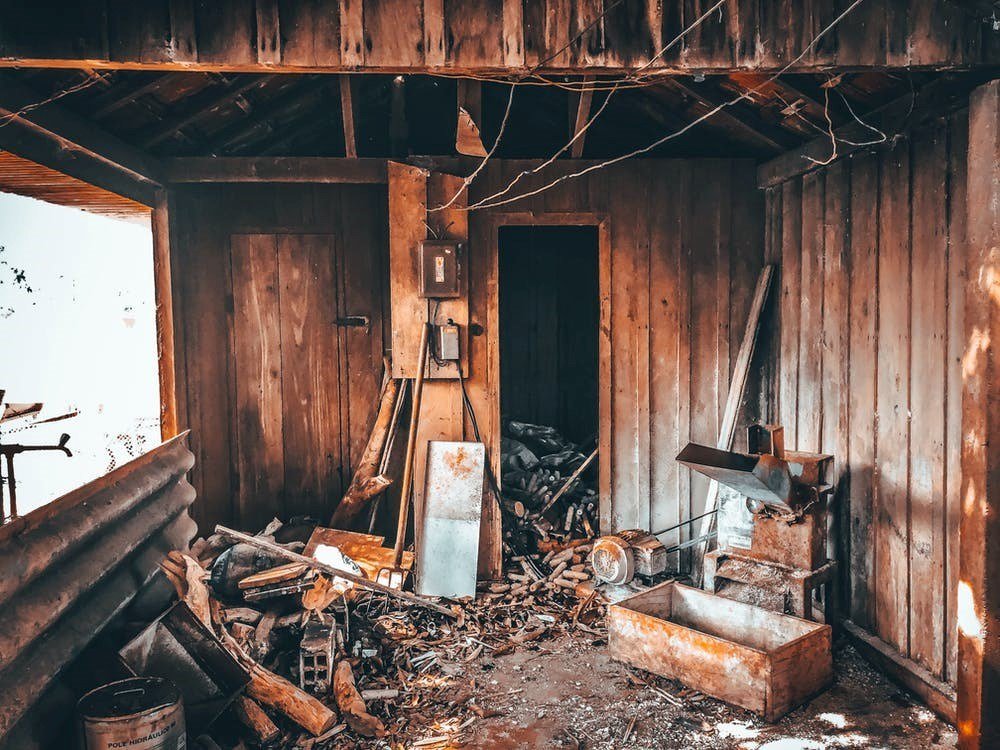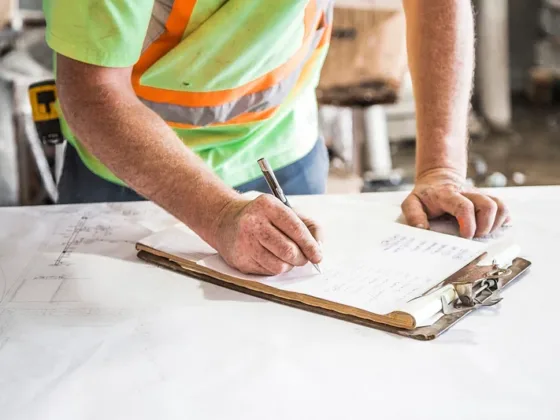Table of Contents Show
The debilitating process of cleaning and renovating your home after a natural disaster is physically and emotionally draining.
The massive financial burdens associated with post-disaster cleanups and renovations add fuel to the trauma.
No homeowner can ever imagine a hurricane or flood wreaking havoc on their life’s most significant investment.
However, it’s crucial to stay prepared, especially if you live in an area prone to weather hazards and disasters.
Earthquakes, floods, rain, snowstorms, hurricanes, tornadoes, and other natural disasters can cause extensive damages.
At times, the damages are minimal and cosmetic; other times, natural disasters dismantle the foundation with massive structural defects.

Your game plan depends entirely on the extent and scope of the damages and the approach you will take.
But first, you must clean the property and get rid of all the junk and debris to start working with a clear palette.
However, clearing out the remnants of a disastrous storm isn’t exactly a breeze in the park. Keep reading to explore some practical tips that will help you every step of the way.
1. Avoid the DIY Route
Natural disasters bring scores of burdensome expenses for homeowners who have suffered extensive property damages.
Sorting out the insurance details can often take weeks, if not months, and you cannot wait around for the process.
Cleaning is a chore you cannot delay, especially if you intend to continue living on the property.
While reducing your expenses is crucial in this challenging time, we advise you to avoid taking the DIY route.
You see, performing the cleaning chores yourself runs the risk of physical injuries and further property damages.
Instead, it’s best to hire professionals for junk removal and sit back and relax while they get the job done.
Seasoned cleaners will bring in specialized equipment to lift and carry the heavy fixtures or trees that may have fallen.
Natural disasters, especially hurricanes and floods, involve severe damages and destruction.
Your backyard may seem like a junkyard, hosting broken street lights, fallen trees, and heavy branches.
It’s wise to let professionals clean up and eliminate all the debris with specialized equipment and machinery.
2. Dry your Home
Natural disasters cause unprecedented damages, but the real damage occurs if you fail to act swiftly once the storm has passed.
It’s crucial to dry out your home and living spaces within the first two days. However, it’s wise to dry your home as early as possible, ideally within 24 hours after the disaster has ebbed.
You can air out the living spaces by opening all the doors and windows, letting the outdoor air inside the house.
It’s wise to set up fans in all the wet areas to blow air and dry out all the moisture.
Don’t neglect to follow this crucial step to prevent mold growth and water-related damages.
Additionally, be sure to dry out the attic, basement, and other vulnerable areas that are more susceptible to water damages.
Read Also:
3. Discard & Declutter
A post-disaster cleanup session requires homeowners to make several hard decisions.
We all harbor emotional and sentimental ties with our fixtures, furniture, and belongings.
However, when things become hard to salvage and restore, discarding and decluttering is the best strategy.
As you attempt to clean, dry, and salvage items and belongings, you will find many things are overwhelmingly challenging to restore.
Instead of trying to recover them, use your money to invest in new items. For instance, pillows, carpets and padding, rugs, stuffed toys, books, wall hangings, and upholstered furniture are often hard to salvage.
Items made with rubber and foam are likely to get soaked with water, rendering them unusable.
Paper products and books are the most significant blow, especially if you’ve spent years building your library.
Losing inherited items and heirlooms with sentimental ties is equally tragic and traumatic.
We urge homeowners to embrace a practical approach and avoid rescuing things that are beyond recovery.
Instead, pour your time, energies, and money into constructive endeavors that will support your life quality and property restoration.
4. Prevent Contamination
Water damages and moisture buildup after a natural disaster can quickly set the stage for contamination.
You don’t want your property riddled with bacteria and infectious diseases. Therefore, you must act fast and decisively without wasting much time.
You will have to engage professionals to remove and toss aside the drywall and insulation if contaminated.
Professionals can help you undertake preventive measures to avoid contamination.
However, if the damage is done, you must discard all contaminated fixtures and foundational elements.
5. Clean All the Surfaces
Aside from cleaning out the exterior surfaces and junk removal from your backyard, be sure to clean all surfaces.
You must clean all surfaces to prevent contamination, mold, and other hazards that stem from moisture retention.
It’s essential to clean out all the wet surfaces and items. You can fix a robust cleaning solution using hot water and detergents.
White vinegar is an excellent cleaning ingredient to eliminate bacteria and ensure spotless scrubbing.
Be sure to clean all the countertops, flooring, wooden fixtures, metallic furniture, appliances, and plumbing fixtures. Leave no surface unclean and exposed to potential contamination.
6. Fix Water Leakages
Your property has suffered extensive damage, and you do not want to exacerbate the destruction.
It’s natural for disasters to create leakage hazards. For instance, a damaged roof can cause leakage and deteriorate the flooring and fixtures in your attic.
If left unattended, the leakage can cause extensive water buildup and damages, leading to corrosion, mold growth and may affect some sensitive storage.
Small leakages in plumbing fixtures and walls set the stage for significant structural defects.
It’s crucial to fix all leakages promptly and prevent them from aggravating. Again, we advise against the DIY route as water leakages demand the scrutiny of a seasoned professional.
Conclusion
Cleaning up one’s home after a natural disaster is an incredibly stressful and overwhelming life event.
It’s crucial to take a step back and recoup your energies. You’re dealing with an immensely traumatic challenge, and it’s essential to surround yourself with support.
Local and state governments roll out various emergency relief programs. Be sure to benefit from these relief programs wherever possible.
Take your time to process and understand the extent of the calamity, and plan strategically.
However, ensure to dry out your property and clean the debris within the first 48 hours.
You don’t want to wait longer, as delays can set the stage for irreversible structural damages.
Also, engage professionals who specialize in disaster cleaning and restoration.
They will help you breeze through the legalities and financial complications with considerable ease.









